Quantum Technologies and Solid state physics
 Quantum Optical Technologies 2.0
Quantum Optical Technologies 2.0
The research is devoted both to fundamental studies and to the development of novel technologies exploiting light correlations and coherence to address open challenges and overcome intrinsic limitations of state-of-the-art devices. Particular attention is being dedicated to the development of quantum and quantum-inspired imaging devices for 3D imaging, hyperspectral imaging and digital spatial filtering (all covered by international patents). The group covers experimental, theoretical, as well as data analysis competences. Ongoing financed projects are carried out through active and proficuous collaboration with several national and international groups, both from academia and industry.
Web Site: https://www.quotlab.uniba.it/
Contact: Prof. Milena D'Angelo (milena.dangelo@uniba.it)
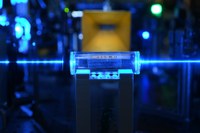 Atomic Quantum Technologies (AQuTech)
Atomic Quantum Technologies (AQuTech)
Our research interests lie at the interface between quantum sensing and metrology, AMO physics, quantum optics, and integrated photonics. In particular, the group is devoted to the development of Atomic Quantum Sensors using hot atoms. We study, design, and build optically pumped magnetometers (OPMs) and Rydberg-atom-based RF sensors for several applications, from biomedicine to geomagnetism and space science. Active research includes the integration of vapor cells with photonic structures for lab-on-chip quantum sensing as well as the development of quantum enhancement techniques.
Web Site: www.aqutech.uniba.it
Contact: Prof. Gianvito Lucivero (vito.lucivero@uniba.it)
 Ultrafast laser microprocessing
Ultrafast laser microprocessing
Femtosecond and picoseconds fiber laser technology allows to achieve precise microstructuring of any material without collateral damage to the surroundings. Our research focuses on the study of light-matter interaction at extremely short time scales and on the development of smart sensors to understand and control the laser process. Our main research activities are focused on micromachining processes for the manufacturing of photonic and mechatronic components. In particular, laser based micromachining of metals like surface-patterning, drilling, milling and engraving are routinely investigated to study the effect of high repetition rate and high average power on the morphology of the microstructures.
Contacts:
Prof. Antonio Ancona (antonio.ancona@uniba.it)
Prof. Annalisa Volpe (annalisa.volpe@poliba.it)
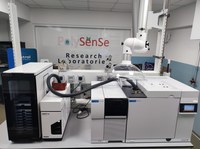 POLYSENSE LAB
POLYSENSE LAB
PolySense, a joint industry-university research lab at the Physics Department was established in 2017 with Thorlabs Inc., leader in the development and commercialization of photonics and opto-mechanics devices, to focus on advances in innovative optical gas sensing systems devoted to the realization of portable sensors for in situ and real-time gas detection. The PolySense lab aims at studying (fundamental research) and developing (experimental research) innovative spectroscopic techniques for different applications, leading to breakthrough advancements in breath analysis, environmental monitoring, leaks detection. Moreover, breath sensing and quality control of coffee beans and hazelnuts roasting analysis is performed by gas chromatography-mass spectrometry.
Web Site: http://polysense.poliba.it/
Contacts:
Prof. Vincenzo Spagnolo (vincenzoluigi.spagnolo@poliba.it)
Prof. Pietro Patimisco (pietro.patimisco@uniba.it)
Prof. Angelo Sampaolo (angelo.sampaolo@poliba.it)
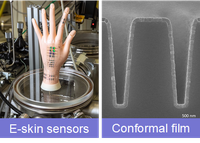 Advanced thin film growth
Advanced thin film growth
The research in Coclite’s group aims at the development of functional thin films produced by advanced growth techniques for a variety of applications (sensors, drug delivery systems, membranes, actuators, icing-control…). Advanced thin film growth techniques like initiated Chemical Vapor Deposition and Atomic Layer Deposition are used because among other advantages they lead to uniform, conformal coatings whose thickness and chemical composition can be controlled to the nanoscale.
Contact: Prof. Anna Maria Coclite (annamaria.coclite@uniba.it)
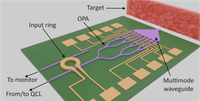 Coherent imaging
Coherent imaging
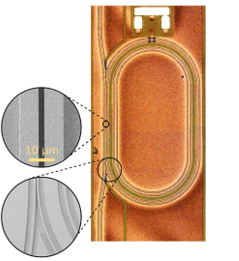 Optical Solitons
Optical Solitons
Spatiotemporal cavity solitons (CS) are dissipative localized structures appearing in the transverse or longitudinal profile of the coherent field propagating in a driven nonlinear optical resonator. A single CS can be turned on and off independently by means of suitable addressing beams and it moves in presence of amplitude or phase gradients of the injected field. One dimensional (temporal) cavity solitons, in particular, are propagative multimode field pulses in a laser resonator, which can be excited in a sequence and are associated to the formation of optical frequency combs empowering all the applicative features in spectroscopy, metrology, ranging and laser stabilization. The research encompasses development of models, analyses and simulations on dissipative solitons in frontline lasers (QCL, MQD etc.) in collaboration with experimental and theoretical groups (PoliTo, Uninsubria, Harvard Un., M.I.T., Tech.Un.Wien, )
Contact: Prof. Massimo Brambilla (massimo.brambilla@poliba.it)
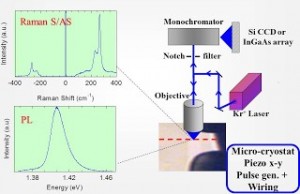 Micro-Raman spettroscopy
Micro-Raman spettroscopy
The research aims to study the thermal and electronic properties of MID-IR and THz quantum cascade laser. Raman and photoluminescence (PL) spectroscopies offer several advantages for microscopic analysis. Since they are scattering techniques, specimens do not need to be fixed or sectioned. Spectra can be collected from a very small volume (down to 1 µm in diameter); these spectra allow the identification of species present in that volume. Thus, Raman and PL spectroscopies are suitable for the microscopic examination of minerals, materials such as semiconductors, polymers and ceramics, cells, proteins and forensic trace evidence. Expanding applications for Raman and photoluminescence microscopy and analysis into low dimensional semiconductors heterostructures and devices requires advanced performances in spectral resolution, laser rejection and sampling capabilities. Our high performance micro-probe laboratory give unique access to devices and measurements not easily achieved on a routine spectroscopic instrument. In the last eight years we dedicated our activities to the experimental study of important issues for the development of both GaInAs/AlInAs/InP and GaAs/AlGaAs Quantum Cascade Lasers (QCLS).
Contact: Prof. Gaetano Scamarcio (gaetano.scamarcio@uniba.it)